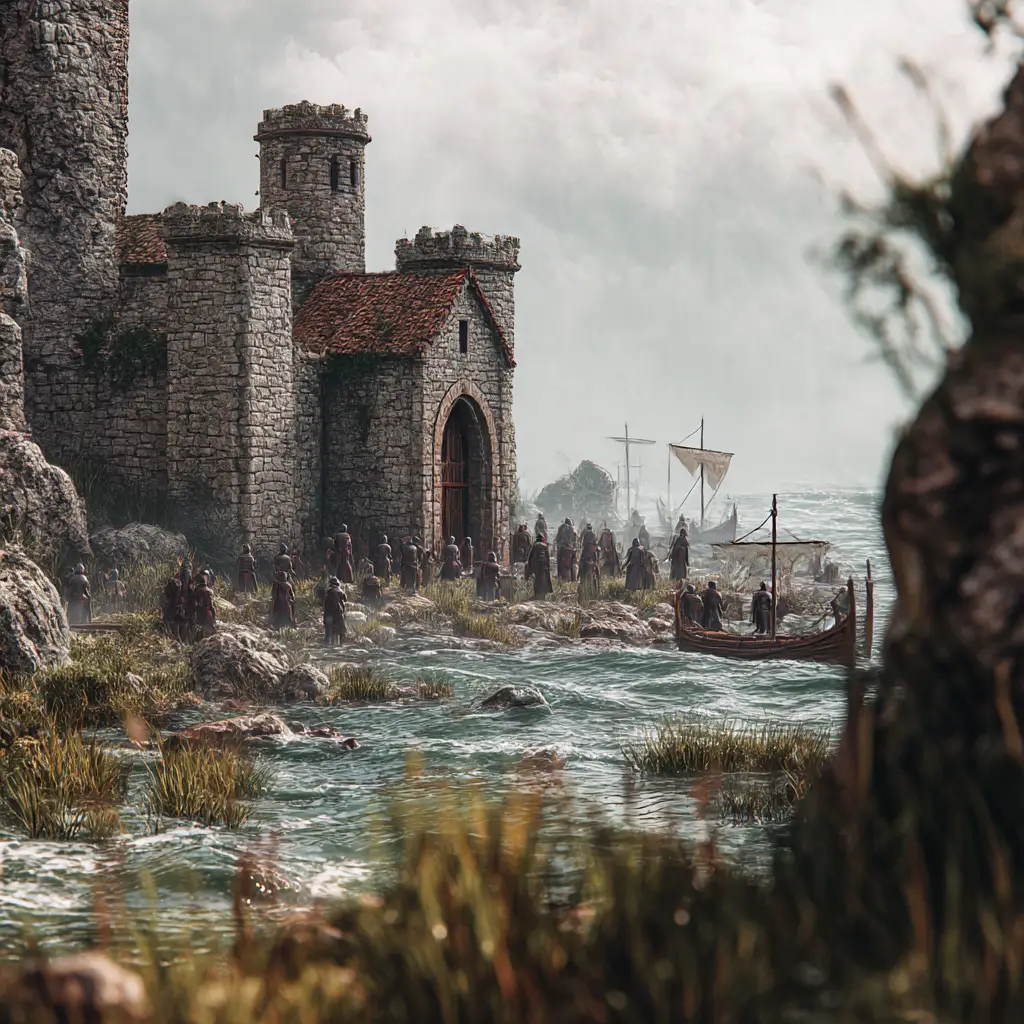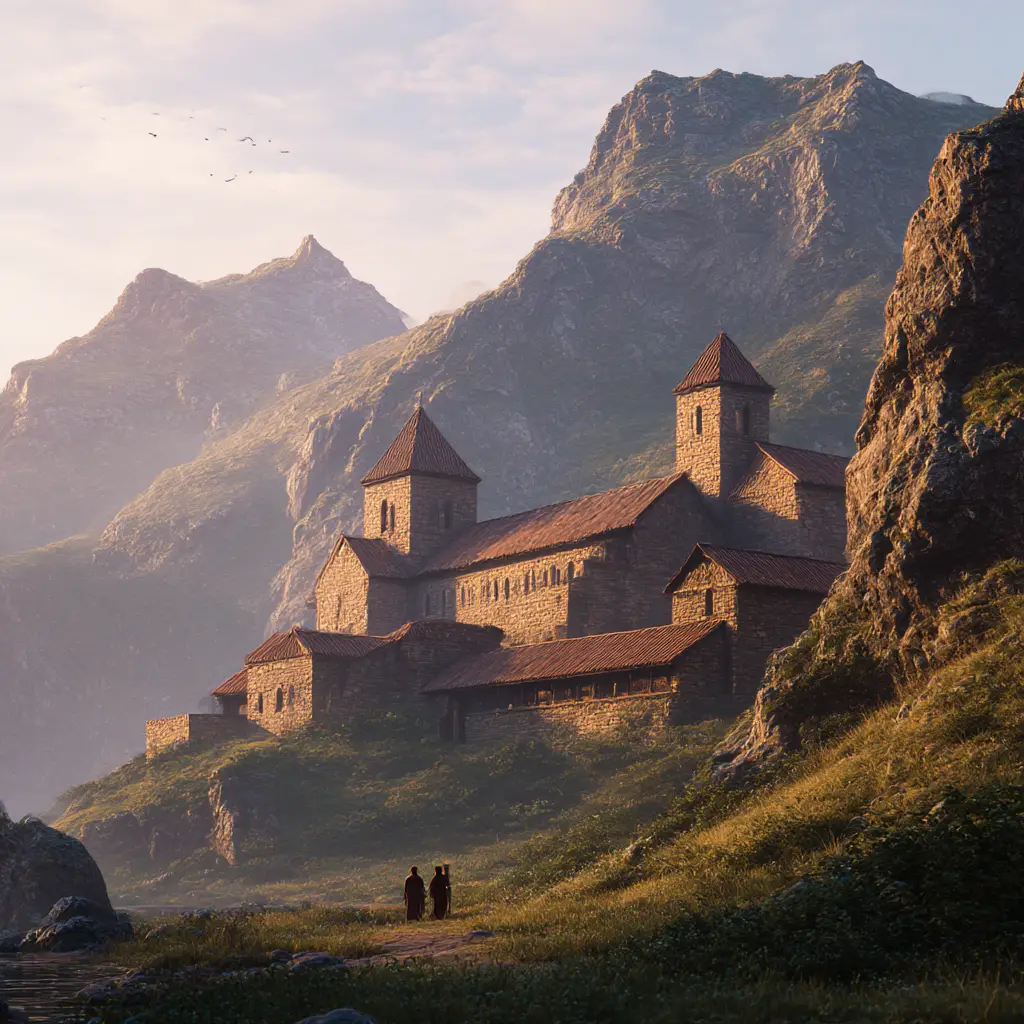The Viking raid on Rathlin Island Monastery stands as one of the early incursions of Norsemen into the Irish Sea, a region that would become a focal point of activity during the Viking Age. Situated off the northern coast of Ireland, Rathlin Island was home to a small Christian community whose monastery offered both spiritual sanctuary and material wealth. Like many monasteries of the time, it was vulnerable to attack, lacking defensive fortifications and positioned within easy reach of seafaring raiders.
The raid is thought to have taken place in the late eighth or early ninth century, when Viking longships began to appear more frequently along the coasts of Britain and Ireland. Rathlin Island was strategically important, offering a staging point between the western isles of Scotland and the northern shores of Ireland. From here, Norse fleets could strike quickly at settlements and religious communities before retreating into open waters.
The monastery itself would have been a target not only for its precious objects such as silver vessels, manuscripts and relics but also for the potential capture of monks who could be ransomed or sold into slavery. The attack on Rathlin reflects a pattern repeated across Ireland and the British Isles, where isolated religious sites became prime objectives for raiding parties. These raids brought fear and devastation but also signalled the beginning of wider Norse involvement in the region.
For the monks and local inhabitants, the raid on Rathlin was a traumatic event, a sudden and violent intrusion into their lives. For the Vikings, it was part of a broader strategy of exploration, warfare and wealth-gathering that would eventually see them establish settlements and trading hubs. The assault on Rathlin Island is remembered today as a significant moment in the history of Viking expansion into Ireland, marking the start of centuries of contact, conflict and cultural exchange between the Norse and the Gaelic world.



